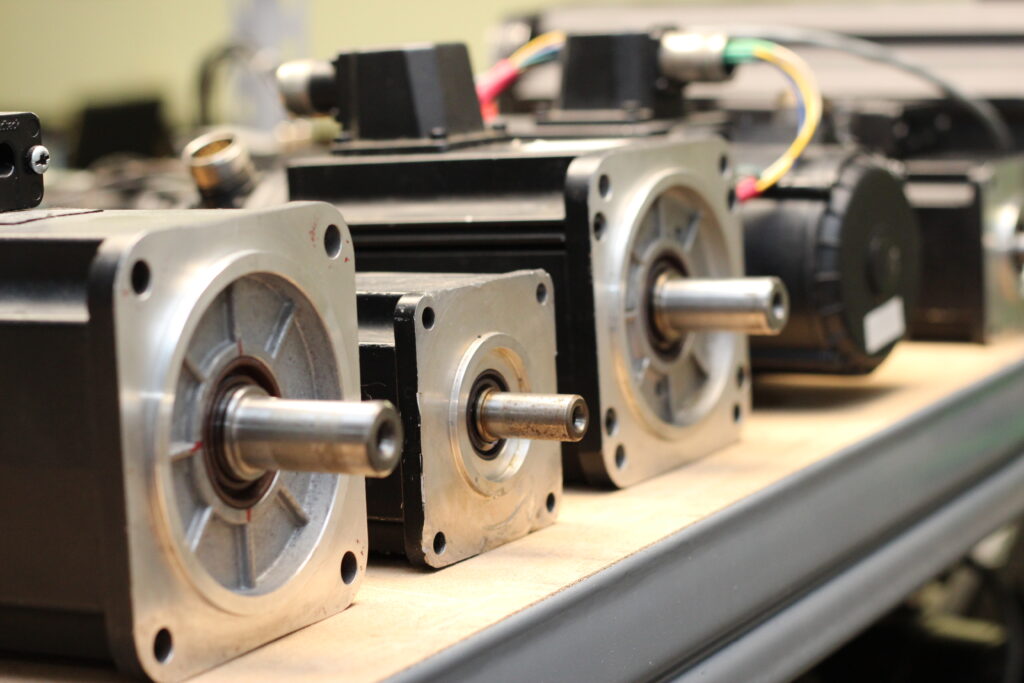8 Tips for Troubleshooting Servo Motor Problems
Like any mechanical or electrical device, servo motors can encounter problems from time to time. Regular maintenance of your servo motors will help to avoid many issues. This includes cleaning, lubrication, and routine inspections to catch potential issues before they become major problems.
Now, suppose that you’ve followed maintenance schedules yet are still encountering problems. Troubleshooting servo motor issues requires a systematic approach and a good understanding of their operation. Here are 8 practical tips to help you diagnose and resolve common servo motor problems.
1. Power Supply Issues
The first step in troubleshooting servo motors is to check the power supply. Ensure that the motor is receiving the correct voltage and current as specified in the manufacturer’s documentation. Any fluctuations in power can lead to erratic motor behavior, overheating, or even damage. Use a multimeter to measure the voltage at the motor’s terminals.
2. Check for Loose Connections
Loose or corroded electrical connections can cause signal loss or reduced power transfer. Inspect all wiring connections, including power, feedback, and control signals. Tighten any loose connections and clean any corroded terminals. Check for broken wires or connectors. First note connector pinout wire colors and then replace as needed.
3. Overheating
Servo motors generate heat during operation. Excessive heat can damage the motor and surrounding components. Ensure that the motor is adequately cooled with the recommended cooling system. Check for blocked ventilation and clean any dust or debris that may accumulate on the motor’s housing.
4. Feedback System
Servo motors use feedback devices such as encoders or resolvers to maintain precise control. Problems with the feedback system can result in positioning errors or faulty commutation. Verify that the feedback device is functioning correctly by checking for damaged cables, connectors, or encoder/resolver disks.
Read: Encoder Alignment: Isn’t Important – It’s Critical
5. Controller Settings
Incorrect controller settings can lead to erratic motor behavior. Review and verify the settings in the controller’s software or hardware interface. Check parameters such as gain, velocity limits, acceleration, and deceleration profiles to ensure they match the application’s requirements.
Similarly, incorrect or outdated software can lead to erratic motor behavior. Make sure your control software is up to date and that your programming code is free of errors. Debug any issues in the software that could affect motor performance.
6. Mechanical Issues
Mechanical problems can also affect servo motor performance. Check for issues such as worn-out bearings, misalignment, or excessive friction in the mechanical system. Lubricate or replace components as needed.
7. Excessive Load
Servo motors are designed to operate within specific load limits. Overloading the motor can lead to overheating and eventual failure. Ensure that the load is within the motor’s rated capacity.
Read: 12 Steps to Reduce Servo Motor Repair Costs
8. Environmental Factors
Environmental conditions can impact servo motor performance. Dust, moisture, and extreme temperatures can cause problems. Many motors must constantly operate in an environment with cooling fluid, or they must be frequently washed down. Either scenario can cause moisture to enter the housing and limit the performance of the motor or encoder. Shield the motor from these elements or use special enclosures or covers to protect it.
And Finally…
If you’ve exhausted all other servo motor troubleshooting steps and the issue persists, refer to the manufacturer’s documentation and technical support resources. They may provide specific guidance on resolving common problems and offer insights into issues unique to their product.
Troubleshooting servo motor problems requires a systematic approach that considers electrical, mechanical, and environmental factors. Regular maintenance and careful attention to power supply, connections, feedback systems, and software settings are essential for ensuring the reliable operation of servo motors in industrial and robotic applications.
Following these tips and working methodically will help you to diagnose and resolve many issues. As a result, you will minimize downtime and maximize the lifespan of your servo motors.
Need More Help?
With Mitchell Electronics, Inc., help is just a click away. Contact us here to learn how we can help!
Or check out our blog post: Servo Motors and Factory Downtime: What’s the Connection?
You can also download The Quick Reference Guide to Servo Motor Maintenance and Repair. Inside this in-depth guide, you’ll find insights into:
- Diagnosing common servo issues
- Understanding common servo error codes
- Knowing what you can fix in-house and what needs to be sent out for repair
- Identifying tools you’ll need to make repairs in-house
- Learning how to find the right repair shop for you




